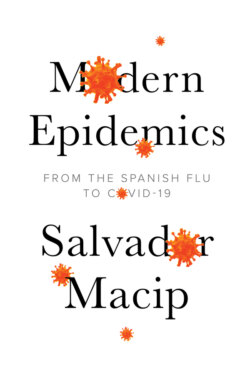Читать книгу Modern Epidemics - Salvador Macip - Страница 22
Bacteria
ОглавлениеTo conclude this initial chapter, I will give a brief account of the three most important kinds of microorganisms from the medical point of view: bacteria, viruses and fungi.
Bacteria are microbes consisting of a single cell. After the sixteenth century, there were theories postulating that diseases were transmitted by a kind of ‘seed’ that went from one person to another but, without the necessary instruments, it was impossible to confirm this idea. It wasn’t until the seventeenth century, when the Dutchman Antonie van Leeuwenhoek invented the microscope, that it was possible to discover these ‘germs’, as they were originally called. In one of his first observations, he described something like abundant ‘very little animalcules’, which were everywhere. He named them animalculae and proposed that they were responsible for infections. It was only possible to demonstrate this in the nineteenth century and, in 1838, Leeuwenhoek’s animalculae were officially named bacteria.
There are many classes of bacteria and they can have very different forms. The most typical are round and they’re called cocci, while the elongated ones are known as bacilli. They are found everywhere, and in abundance. For example, there are 40 million bacteria in every gram of earth, and 1 million for each millilitre of water. If we counted all the bacteria on the planet, we would get a figure with thirty zeros. It’s therefore believed that most of the types that exist haven’t yet been discovered or identified.
As I said in the beginning, bacteria participate in many important processes in our ecosystems, for example recycling nutrients through nitrogen fixation and putrefaction. They are also necessary for fermentation: without the work of bacteria, there would be no cheese, wine, vinegar or yoghurt. Scientific advances have made it possible for us to carry out research with them in laboratories, and new bioengineering techniques allow us to use them to produce insulin and antibodies.
Bacteria multiply by means of a process called binary fission, during which a bacterium divides into two identical parts. The genetic information of a bacterium is contained in a single circular chromosome (recall that humans have twentythree pairs of X-shaped chromosomes). However, bacteria can also have isolated genes, independent of the chromosome, which they frequently obtain through exchanges with other bacteria. These ‘extra’ genes are called plasmids and they are very important in infections. Plasmids allow bacteria to acquire new capabilities, for example resistance to an antibiotic, or generating a lethal toxin, as happens in the cases of diphtheria and cholera. Other diseases caused by bacteria are tuberculosis and plague.
